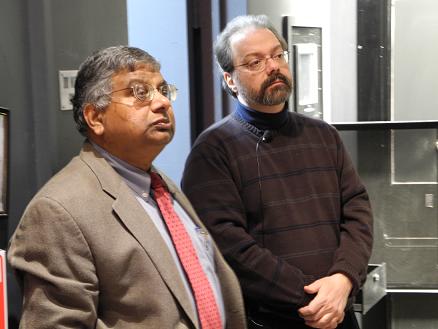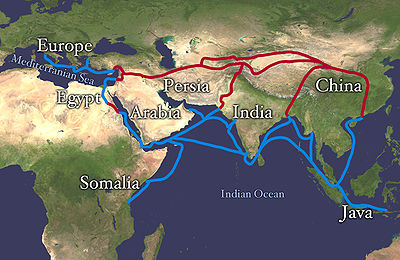Contribute
| Silk Road And South Asia: Intersections Of Culture |
C. Gopinath
02/28/2011
On 13 February 2011, Dr. David Kalivas, Professor and Commonwealth Honors Coordinator, Middlesex Community College traced the origin and meaning of the ‘Silk Road’ while explaining its interconnections with the history of South Asia. The lecture was a part of the outreach lecture series on the track “Indian Society through the Agesâ€, organized by the Department of Sanskrit and Indian Studies at Harvard University.
The Silk Road was, in reality, not a road. It was a metaphor first used in 1877 by the German geographer Baron Ferdinand von Richthofen to represent an extensive network of inter connected trade routes that ranged from the east to the west. The focus of Dr. Kalivas’ lecture was to explain that the cross-cultural contacts that influenced civilizations was not a simple Xian in the east to Constantinople in the west issue, but connected several places along Central and Southern Eurasia. While these interchanges took place overland for a long time, there were maritime routes too around peninsular India.
Liberally illustrating his talk with beautiful maps, Dr. Kalivas provided a vivid overview of the geographic span that these interchanges effected. He traced these interchanges historically from the time of Alexander (325 BCE) to that of the Mughal Empire (1858 CE).
The interchanges that took place are revealed in several forms. People moved and settled elsewhere. For instance, the Kushan Empire (1-3 BCE) in the northern parts of South Asia was made of people from northern China. But their coins had Greek lettering, the lingua franca of those times. The Mughals traced their lineage to the Mongols. Their architectural styles as seen in the Taj Mahal and the Red Fort are traceable to many parts of Eurasia.
Various other interchanges that took place include commodities (silk, tea, spices), art, and jewelry. Religious exchanges led to the spread of Buddhism, Islam and Christianity. Dr. Kalivas explained how Buddhist monks such as Faxian (337-422 CE) and Xuanzang (600-664 CE) who came traveling for pilgrimage and to obtain authentic manuscripts left detailed records of the times. The conclusion that Dr. Kalivas made was that borders tend to be porous and the interchanges along the silk illustrate the point.
Dr. Kalivas’ enthusiastic presentation was well received by the audience who got engaged in the subject by asking several questions in the discussion period that followed. Dr. C. Gopinath in his introduction of Dr. Kalivas did make the observation that even today, once can see a sign pointing to the ‘Silk Road’ at the India – China border near the Nathu La Pass (14,000 feet above sea level), as he saw during his visit a few years ago.
This lecture was the eighth event in the series that began in November, 2009. In his welcome to the audience, Prof. Bijoy Misra, Convener of the Outreach Committee, recalled that the Outreach lectures, which began in January 1995, completed 16 years. He acknowledged the role and contribution of Thomas Burke, Sanskrit scholar (retired from Harvard University), who has been a member of the Outreach Committee from the beginning and has attended almost all lectures. He also acknowledged the presence of Mrs. Ruth Hill, Oral History Coordinator at Schesinger Library of Radcliffe College, who has been a constant inspiration with her presence and curiosity. Her husband, the poet and icon late Dr. Hugh Morgan Hill, Brother Blue, was instrumental in helping the India Poetry Reading that is organized every year in May. Outreach lectures over the years have covered several aspects of Indian Studies, in culture, arts, history, religion, architecture, philosophy, languages and literature. It’s a forum for public discussion of academic topics for discussion, engagement and enrichment.
The next event in this series will be on ‘Gods Take Form: Indian Art at the Turn of the Millennium,’ by Laura Weinstein, the Ananda Coomaraswamy Curator of South Asian and Islamic Art, Museum of Fine Arts, Boston, on 13 March at 3 PM, in Hall A, Harvard University Science Center, 1 Oxford Street, Cambridge. You may contact C Gopinath at cgopinat@suffolk.edu, or Chandrakant Shah at chandu420@gmail.com or Bijoy Misra at bmisra@fas.harvard.edu for any questions or to be in the mailing list. Lectures are free and everyone is invited.
You may also access this article through our web-site http://www.lokvani.com/

